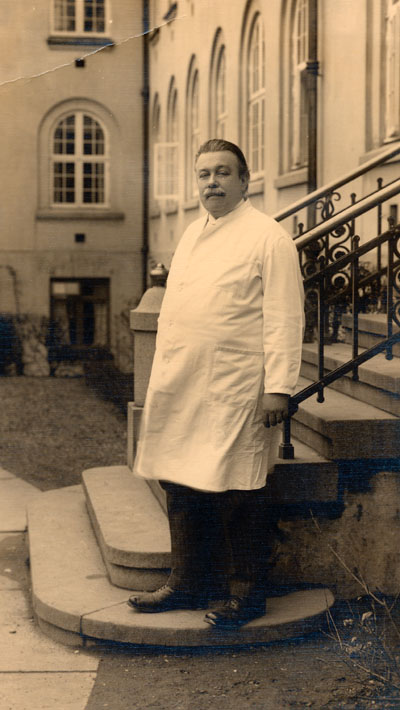For three decades now, Prehistoric Archaeology, Medieval Archaeology and Ethnography have had premises in the former manor house of Moesgaard to the south of Aarhus, and since the middle of the 1970's a number of Arts subjects have been housed in the Trøjborg Complex.
The former military barracks on Langelandsgade has been home to the Aesthetic Subjects since 1998, and Modern Languages moved into newly constructed buildings in the Nobel Park on the corner of Randersvej and Nordre Ringgade in 1999. Here too can be found The Centre for European Cultural Studies with Department of Gender Research. The Centre for Cultural Research is based in the former Katrinebjerg Business Centre, together with the Centre for Semiotic Research. This is also where the Sports Science course, which was introduced in 1997, has now been given teaching accommodation, having originally been based at the Aarhus School of Engineering.
As mentioned earlier, in 2000 the Faculty of Theology moved out of the main building into the former Orthopaedic Hospital, while the former Maternity Home was reborn as a Health Sciences Library and Education Centre, under the name of The Victor Albeck Building. In the same year, the university inaugurated its new buildings in Åbogade as the IT Park. The IT Park has an area of 4,000 square metres, housing staff and students from the Department of Computer Science, the Department of Information and Media Science, together with representatives of the Aesthetic subjects. The Centre for IT Research, The Alexandra Institute Ltd., together with part of IT-Vest are also located in this complex. A total of 100 staff and 250 students work in the IT Park, and the plan is for it to eventually expand to be able to accommodate all of the university's IT and Media activities, and, furthermore, there are plans for a new IT Research Park where private companies will be able to establish themselves with direct access to the university's active and dynamic research and teaching environment within the field of IT.
The Department of Psychology is located in the Aarhus suburb of Risskov, as is the Department of Biological Sciences' Section of Botany. This same departments Section of Marine Ecology is situated on Finlandsgade, while the Department of Molecular and Structural Biology has laboratory units in Aarhus Science Park on Gustav Wieds Vej.
 To the south of the blocks of flats on the Ringgade, at the top left, are the Science Park and the former Langelandsgade Barracks, which have accommodated the Faculty of Arts' Aesthetic Subjects since 1998. In the top right corner, a section of the Nobel Park's impressive new buildings can be seen, and just to the left of these is the former Orthopaedic Hospital, which became home to The Faculty of Theology in 2000. South of the lake in the University Park a building to contain five lecture theatres is under construction. To the right of that is the former maternity home, which, after renovation, re-opened in 2000 as a Health Studies Library and Education Centre under the name of the Victor Albeck Building. The picture was taken on the 9th June 2000. (Photo: Erik W. Olsson. External Relations Office). |
 The Jutland State Maternity Home was inaugurated in 1910 on a site just south of what would later be the university area. In the 1990's, the institution's medical activities were transferred to Skejby Hospital, and the building was renovated and equipped as a Health Studies Library and Education Centre. The building was re-inaugurated on the 20th January 2000 as the Victor Albeck Building, in memory of the first medical director, Victor Albeck (1869-1933), who had spearheaded the campaign for a university in Aarhus. In this picture, which was most likely taken in the late 1920's, Albeck is seen in front of the Maternity Home's main entrance. (University History Committee). |